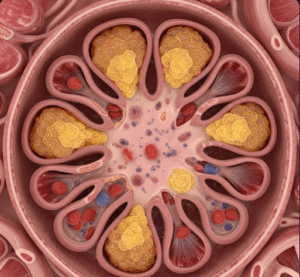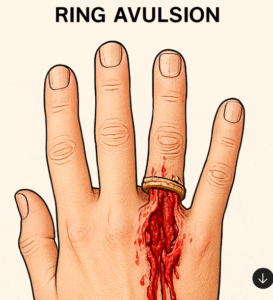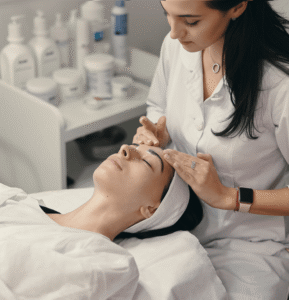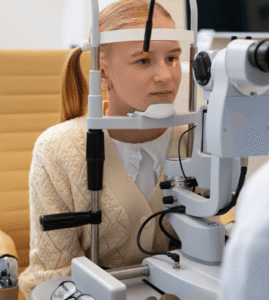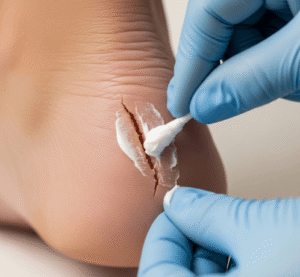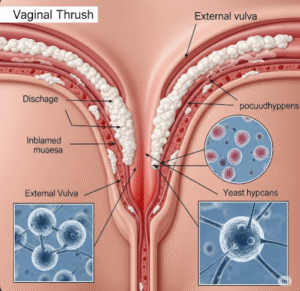Overview
Zenker’s Diverticulum is a rare disorder in which a pouch forms in the upper part of the esophagus, just behind the throat. This pouch traps food and saliva, leading to swallowing difficulties, bad breath, coughing, and regurgitation. It primarily affects older adults and is often misdiagnosed as other swallowing disorders. Timely diagnosis and appropriate treatment can relieve symptoms and improve quality of life.
What is Zenker’s diverticulum
Zenker’s Diverticulum is a type of esophageal diverticulum that occurs in the hypopharyngeal region, specifically through a weak spot in the posterior pharyngeal wall called Killian’s triangle. It results in an outpouching of mucosal tissue that traps food and secretions. This condition is classified as a false diverticulum because it involves only the mucosal and submucosal layers. It is most commonly seen in elderly individuals and can lead to progressive swallowing difficulties and aspiration.
Symptoms
- Difficulty swallowing (dysphagia), especially with solids
- Regurgitation of undigested food, sometimes hours after eating
- Chronic cough or throat clearing
- Foul-smelling breath (halitosis)
- Sensation of a lump or fullness in the neck
- Hoarseness or gurgling sounds after swallowing
- Aspiration (food entering the airway), leading to pneumonia
Causes
Zenker’s Diverticulum is caused by a combination of anatomical weakness and increased pressure in the esophagus:
- Weakness in the upper esophageal wall at Killian’s triangle
- Increased intraluminal pressure during swallowing
- Esophageal motility disorders, leading to uncoordinated muscle contractions
- Chronic inflammation or muscle dysfunction in the upper esophageal sphincter (cricopharyngeal muscle)
Risk Factors
- Age over 60 years
- Male gender (slightly more common in men)
- Chronic swallowing difficulties
- Gastroesophageal reflux disease (GERD)
- Neurological disorders affecting swallowing (e.g., Parkinson’s disease, stroke)
- History of esophageal or throat surgeries
Complications
- Aspiration pneumonia, due to food or liquids entering the lungs
- Severe malnutrition or weight loss due to feeding difficulties
- Esophageal obstruction
- Ulceration or bleeding within the pouch
- Rare risk of cancer (squamous cell carcinoma) developing in the diverticulum wall
- Social discomfort due to bad breath and regurgitation
Prevention
There are no guaranteed methods to prevent Zenker’s Diverticulum, but early management of swallowing disorders and esophageal health may help reduce the risk:
- Proper treatment of acid reflux to reduce esophageal pressure
- Speech and swallowing therapy in individuals with neurologic conditions
- Regular monitoring for elderly patients with progressive swallowing difficulties
- Healthy eating habits, such as eating slowly and chewing food thoroughly
Treatment Options in Korea
In Korea, Zenker’s Diverticulum is managed using advanced diagnostic and surgical techniques. Available treatment options include:
- Endoscopic stapling (diverticulotomy): A minimally invasive procedure where the pouch wall is divided using a stapler to restore normal food passage — offers fast recovery with fewer complications
- Endoscopic laser or electrocautery incision: Used to open the diverticulum with precision, often performed under general anesthesia
- Open surgical excision (diverticulectomy): Recommended for large pouches or recurrent cases; may include cricopharyngeal muscle myotomy
- Cricopharyngeal myotomy alone: Cutting the tight upper esophageal muscle to relieve pressure and prevent further pouch formation
- Postoperative dietary support and monitoring to ensure recovery and prevent aspiration
Patients generally experience significant improvement in swallowing and a reduction in symptoms after treatment. Follow-up is important to detect recurrence or complications early.



